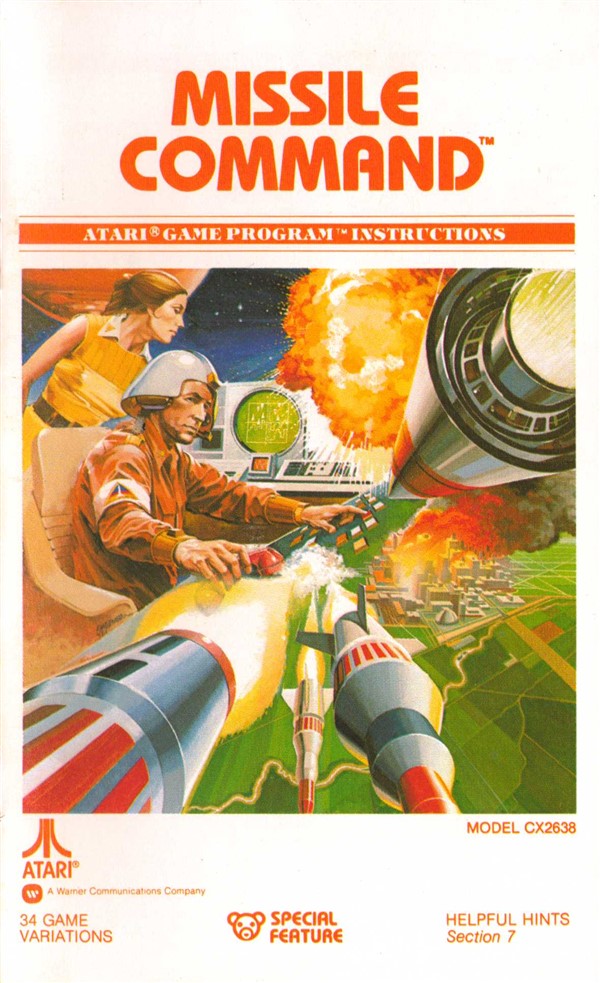
#Missile commander simulator simulator#
The purpose of using this simulator is to form and consolidate the skills of driving a combat vehicle (for driver-mechanic), as well as target reconnaissance, firing anti-aircraft guns and missiles, in all operating modes of the surface-to-air and anti-tank missile system in a classroom environment. “It is one of many milestones en route to delivering appropriate capability to our soldiers.Surface-to-air and anti-tank missile system 2S6 “Tunguska” crew simulator is intended for education and training of the crew (commander, senior operator, gunner, driver-mechanic). This latest test “is not a capstone event,” Gen. “We do expect the level of complexity of the testing to increase in IOT&E,” added Col. Then it’s back to training on IBCS – including any modifications made based on feedback from the LUT – and refining the Tactics, Techniques, & Procedures (TTPs) to use it in combat.Īs a result, “when we get to IOT&E, the goal is they’re operating at a much higher capability than what they are today,” Behrens said. “As we finish this assessment, this LUT, which completes around the middle of September, the battalion only gets a couple of weeks ,” said Col. Then the Pentagon’s independent testing arm will run a massive Initial Operational Test & Evaluation (IOT&E) that starts around September ’21 and runs well into 2022. The program will conduct a developmental flight test in July 2021, designated Flight Test 6. While the live-fire portion of this fall’s Limited User Test is now over, there are more ahead. There’s no way to run that many tests in the real world, but if your real-world data matches the model, it gives you more confidence that your high-speed computations are correct. Those are “very high-fidelity sims,” Rasch explained, “that do “hundreds of thousands of runs” testing a vast range of different variables, using what’s called a Monte Carlo approach (first employed in the Manhattan Project). “So I’m very confident, Syd, that we have stressed the system and the soldier to the point, with sufficient complexity, to best understand how they operate and how the system operates,” Gibson said.īut if the live-fire tests aren’t to stress the system, what are they for? Their main purpose is to get real-world data to confirm – or correct – the Army’s simulations, particularly the ultra-detailed physics models used to calculate optimal interceptions. “In fact, we did it at varying levels for each crew, multiple times, day or night.” Brian Gibson, the modernization director for air & missile defense at Army Futures Command. “We demonstrated that in this test more than once per crew,” added Brig. “They’ve been able to demonstrate they can handle that with this system.”

Tony Behrens, the Army Capability Manager for air & missile defense. “What really we’re after for them is a stressing environment which we can only do in simulation, because obviously we want to fly a lot of targets different kinds of targets all at the same time,” said Col. Robert Rasch, the Army’s Program Executive Officer for Missiles & Space, the complexity of the two live-fire tests was “about the same.” This time there was no enemy jamming disrupting the IBCS network’s transmissions, as there was last time and as there would be in a war with Russia or China. In one aspect, though, this week’s test was actually less challenging than last week’s. A single Patriot missile defense radar can’t watch both high and low at once – but the whole point of IBCS is to connect previously incompatible systems, in this case Patriot and Sentinel, and let any command post on the network get high-fidelity data from different kinds of radars in different locations. While last week both targets were the same type, MQM-178 Firejet drones, flying in close formation, this week there were two very different targets on radically different trajectories: an MQM, flying low and (relatively) slow like a cruise missile, and a Black Dagger/Boosted Zombie, flying high and fast like a ballistic missile.


 0 kommentar(er)
0 kommentar(er)
